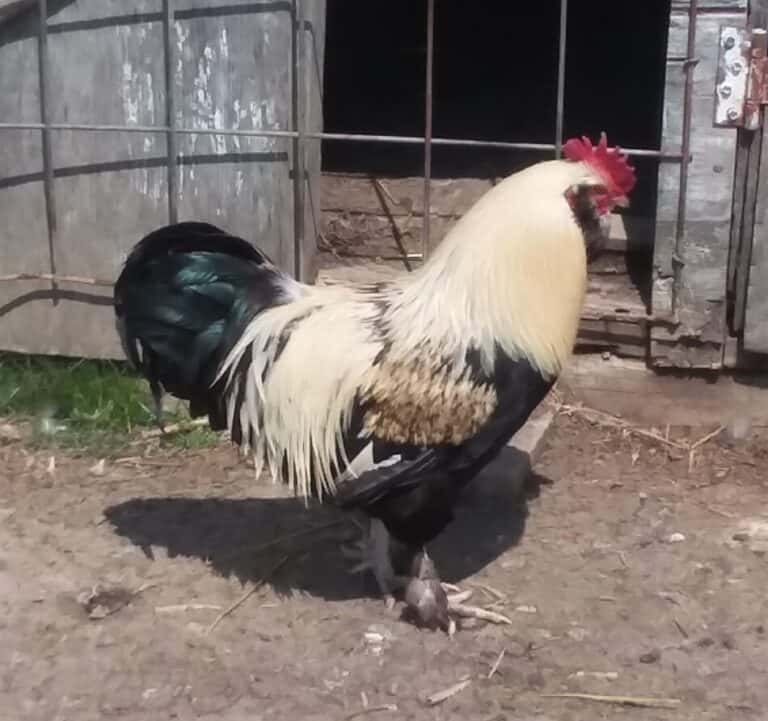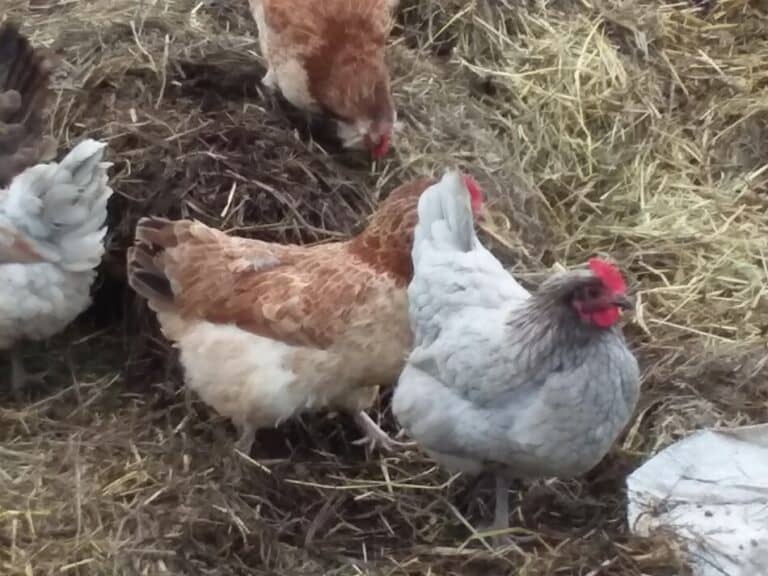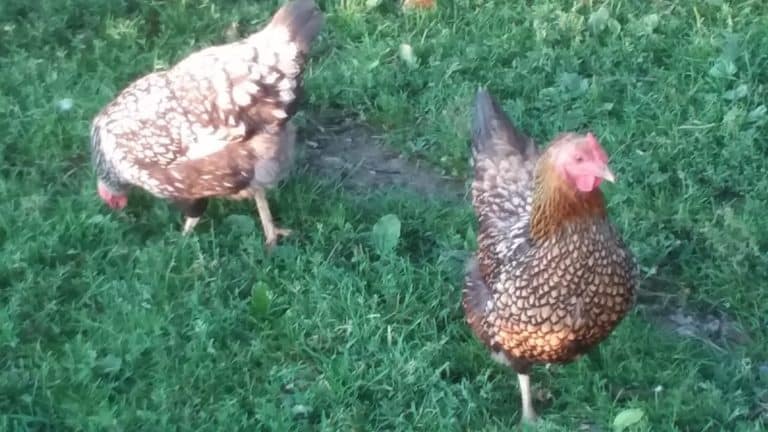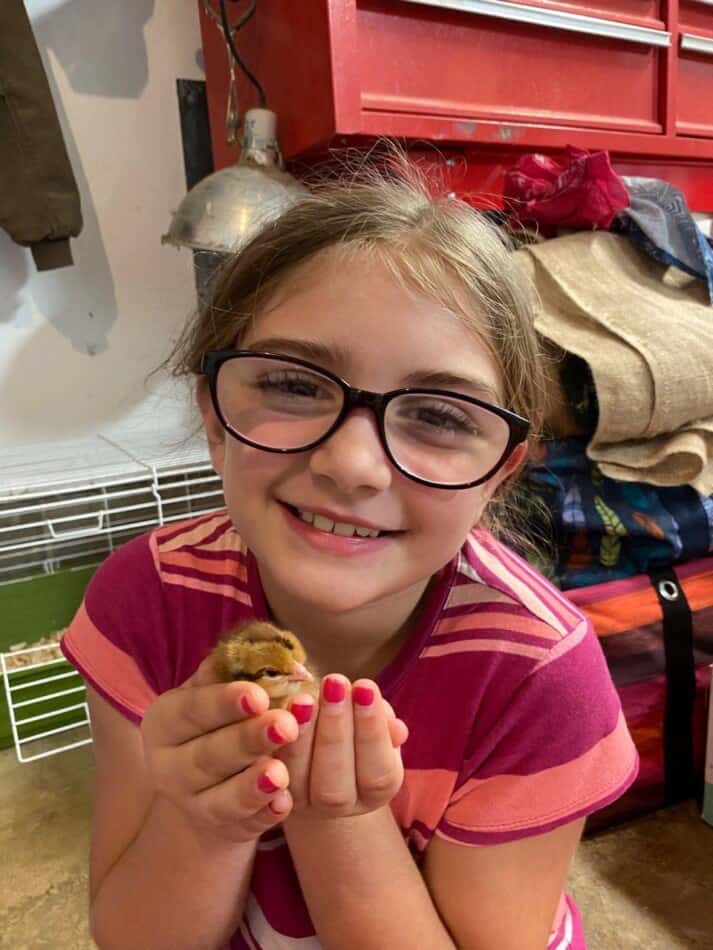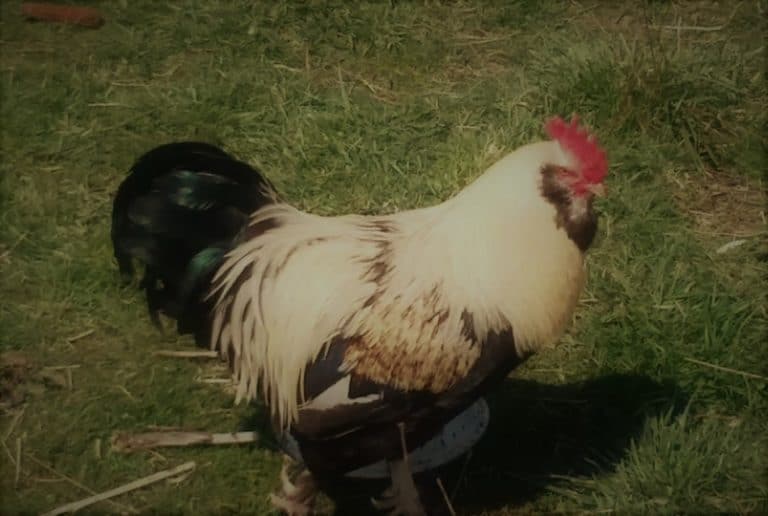Cornish Cross vs. Red Ranger Broilers: Which Is Better To Raise?

As you’re looking through the poultry catalog, you’ll notice there are more than the standard white broilers available.
Should you branch out and try some of the colored broilers, or would you be better off sticking with the white?
Cornish cross broilers are the fastest to reach butchering weight and are easy to manage. Red Rangers take 50% or more time to grow, are more active and have more flavor.
I was in our local farm store which always has chick days in the spring, usually before Easter, and they had some chicks marked down to $0.99 each.
That’s a good price for a broiler!
Is Raising Meat Chickens Worth It? helps you put together a budget for raising your own broilers.
The only catch is I get whatever is left over since the reason these are marked down is that they are chicks that didn’t get picked by customers earlier in the week.
I bought all of the meat chicks they had left, which was both broilers and red rangers.
I thought it would be a fun project to see which of the types of meat chicken we liked better and I wanted to see how they grew in comparison to one another and if there were any other differences.
Raising 25 Broilers is a beginner level article going over the things you’ll need for your broilers, including brooder set up and feed selection.
Specifically in the area of flavor, I have heard multiple people on videos say they raise the Red Rangers for significantly better taste than the cornish cross broilers.
I love the taste of home raised chicken, so I was excited to find out for myself!
For broiler growth, white is faster
- Cornish cross broilers grow faster, finishing in 8 weeks
- Cornish cross broilers can be processed earlier for smaller carcass
- Red Rangers finished in 10 weeks
- Red Ranger are meaty but have a smaller carcass
At first the broilers all seemed to grow the same, if you just looked at the chicks.
Cornish growing faster was measurable at 1 week
When you picked them up and definitely when you weighted them you could tell a difference in growth by the time they were a week or so old.
At two weeks, the cornish cross had more than doubled their weight some of them had tripled it.
At the same weigh in the red rangers were solid in the doubled their weight category, so far very similar.
After 2 weeks, ease to see the white broilers were bigger
From here on out the cornish rapidly out paced the red rangers as far as growth.
In fact, I didn’t even weigh them any more since it was easy to see when looking at the birds.
Not to mention that weighing them requires them to be still on the scale, not a likely event for a healthy chicken.
Here are the Meat Chickens available at our local hatchery, Meyer Hatchery in Polk, Ohio. Look around to see your meat chicken options, including different colored broilers.
Comparing growth of white and red broilers
The final growth comparison is in the time each took to get to butchering size.
Remember, the best size or time to butcher is an individual choice depending upon how big of a carcass you want.
We like them to be on the larger end of things so we tend to process these birds at 8 weeks or so.
Cornish outpaced the Red Rangers
The cornish performed well, as expected. Fast growers and big, meaty and beautiful carcasses.
The rangers took longer, we gave them two more weeks, which put them at 10 weeks right in the middle of the recommended 9-11 weeks until butchering.
Red Rangers had a fully filled out carcass but were overall still significantly smaller sized than the white birds.
Red Rangers are heavier than they look
A point in favor of the rangers is that they are much more compact and meaty than they look to be.
Grab one and it is surprising how heavy they are.
I have to admit my being surprised by the weight is surely due to the fact that they still look, coloring wise, like a laying breed chicken, which are much lighter weight birds.
If you are interested in the costs of raising your own meat birds, check out my article Cheapest Meat Animal To Raise.
It includes a cost breakdown chart of various meat animals including broilers listing total cost for the project and total cost per pound of meat.
White broilers act differently than red ones
- Cornish cross are a slower reacting bird
- Cornish cross are easier to keep in the pen
- Red Rangers are a more active bird
- Red Rangers are quicker to move and can jump out
As far as raising the birds goes this is the biggest difference that I noticed, behavior.
Cornish are calm and low activity level
Cornish cross broilers are very calm and slow compared to other chicken breeds, like hens in your layer flock.
This is normal behavior for broilers, they are just a clunkier bird in looks and in mannerisms.
Rangers are active and agile
On the other hand, the rangers act much more like a barnyard chicken, much more active.
In fact when I would open the top of the grazing pen to put in feed, it was common for a ranger or two to hop up and out of the pen to zoom around on the grass.
Then of course it needs caught and put back in.
If the ranger just jumped up to the top of the cage but stayed there, it would normally just jump back in when I put in the feed.
If it made it to the ground now there is some chasing to do.
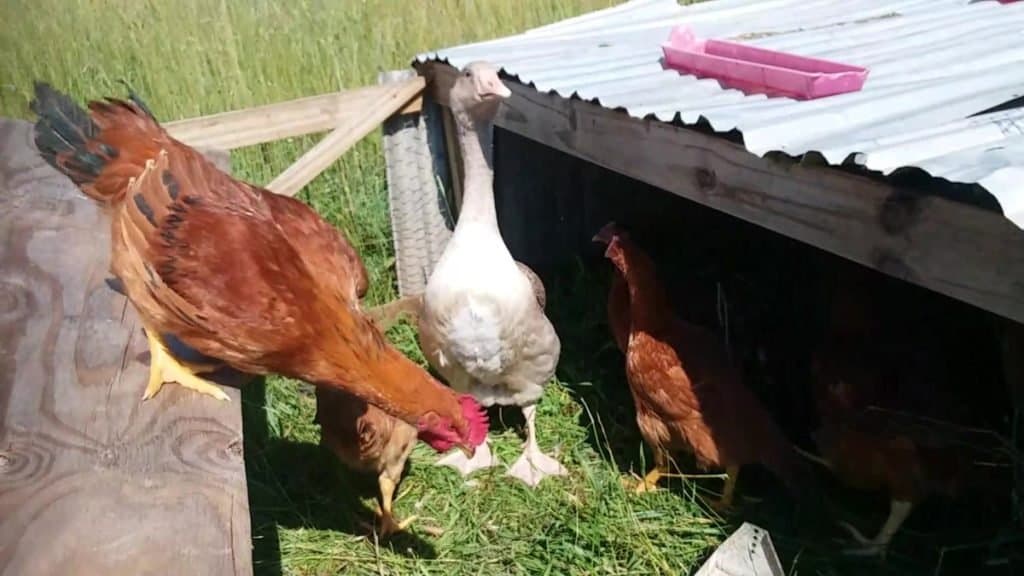
The rangers were also better movers as far as moving forward to new grass when I pulled the pen ahead each day.
The rangers seemed to run to the new grass.
The white broilers were glad to see the new grass but did more of a saunter over casually to the new area, not really running.
White broilers are easier to process
- Both chickens easy to pluck, yielding a beautiful carcass
- Red Rangers have a smaller body cavity so harder to reach into
Here again the rangers caught me off guard, I thought they would be more difficult to process than the broilers, but not so.
The only difference I really noticed regarding the ease of processing was in the evisceration (taking out the insides).
The carcass of a ranger is smaller than that of a cornish cross so if you have bigger hands the rangers are a tighter fit.
Still doable, just a smaller area to work in.
Red Rangers have white skin and legs
The obvious difference is that the rangers have white skin and legs, versus the normal (at least to most Americans normal), yellow skin and legs.
I don’t think the skin color has anything to do with flavor. At least, we could not tell a difference. It’s only appearance.
Once the bird is cooked the skin that was white ends up looking just as golden as the skin that started out yellow.
If you are expecting yellow skin or the people you are raising them for are expecting yellow skin, you may need to raise the white broilers, instead.
Red Rangers have more flavor
- Red Rangers have more flavor
Taste is where the two birds are the most different.
The rangers do have more flavor than the cornish cross. If flavor is your only concern look no further, for you the answer is to raise red rangers.
White broilers normally have great taste
I am a bit concerned about the people raising cornish cross and reporting no flavor or poor flavor.
That has never been the case for the ones we have raised, the broilers, the white ones, always are great tasting and have lots of flavor.
If your white broilers are bland, you are doing something wrong.
I’m not saying the white broilers have more flavor than the red rangers, they do not.
I am saying that if your white broilers are disappointing you flavor wise, consider ways you could modify your bird raising methods.
Our home raised white broilers are always great for roasting and using the carcass as a base for soup stock.
If this is not true for you think about the freshness and quality of your feed source.
Consider putting your birds on grass and moving them more frequently. You are what you eat and so are the broilers.
White broilers are still my choice
- Cornish cross are still my pick for meat chickens
Despite all of the positives of red rangers (even my daughter’s glowing response to my text asking how they liked the chicken), I will choose the white broilers again for next time.
Unless, of course, I can get more bargain chickens somewhere!
I like the fact that the cornish cross broilers are so easy to raise and that they are fast.
Is a batch of colored broilers in the future? Probably yes, but my go to is still the normal white cornish cross.
I have to admit I am curious about the other colored broilers as well, I am referring to the rainbow, kosher and black broilers that are available now.
Each seems to have a bit of a different make up, so should be a bit different to raise.
If you have problems with heat stress or livability issues, choose Red Rangers
I must say that if we had problems with livability in our broilers I would definitely try rangers.
As long as we keep the cats out of the pen, ours do great. If you need to raise a tougher broiler, go with the reds.
We are in Ohio, so anyone in a warmer climate would have more trouble with heat stress in the broilers than we normally do.
It can certainly get hot here, but in most years the summer heat is not relentless.
The rangers or other colored broilers I would think could handle more heat than the white broilers.
You might disagree with me on broiler choice
- Your priority is the best taste
- You need a more active bird
If you value taste above all criteria, then you should choose the rangers.
If you feel better about being out of the commercial mainstream style genetics, you should choose the rangers.
Maybe you just want a bird with a bit more spunk or you have to get a bird with more spunk, then by all means go for the ranger!
For our normal chicken roasting needs, we plan to continue with the regular cornish cross broiler.
They always turn out well for us, are faster to finish and they are just all around a little bit easier.

